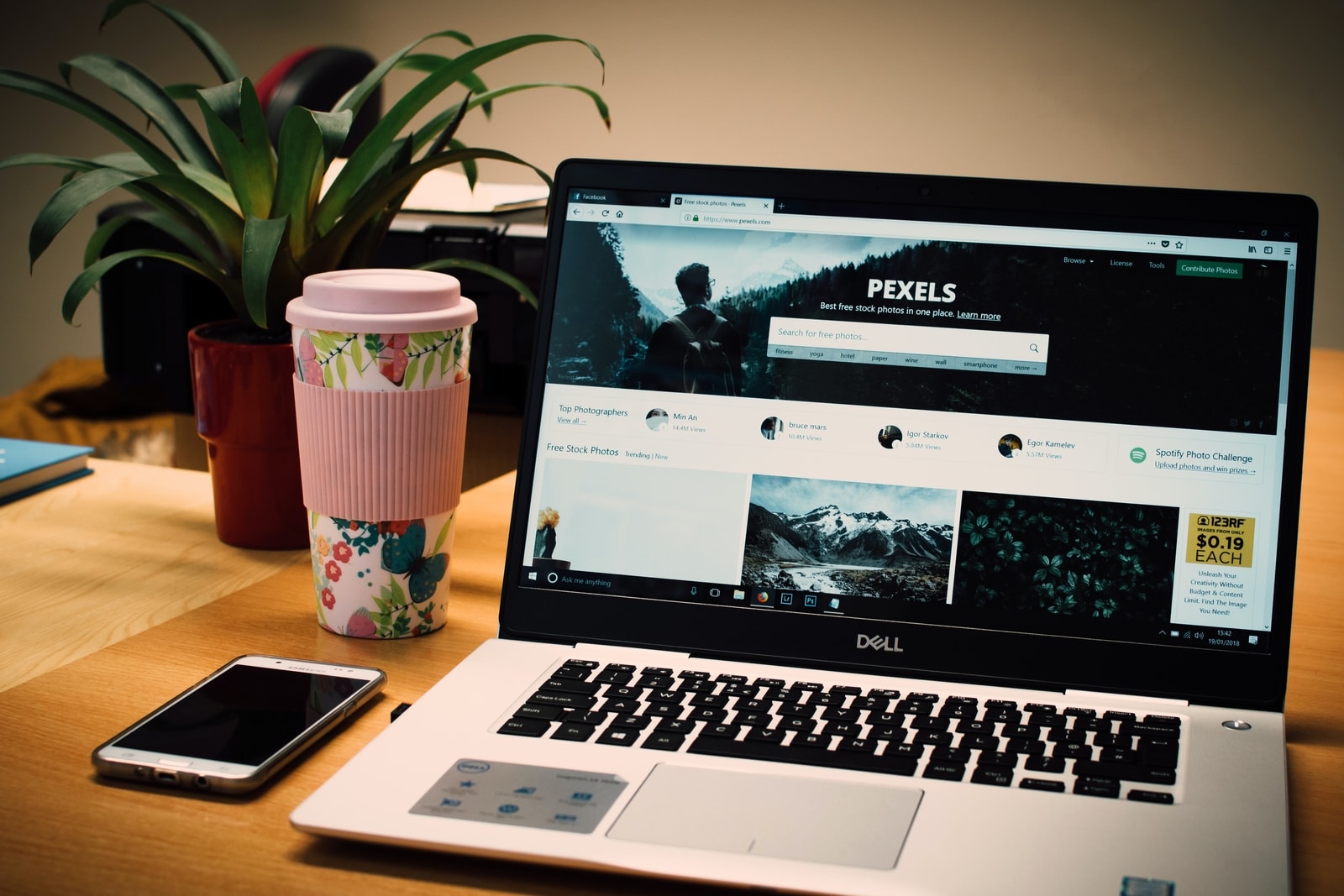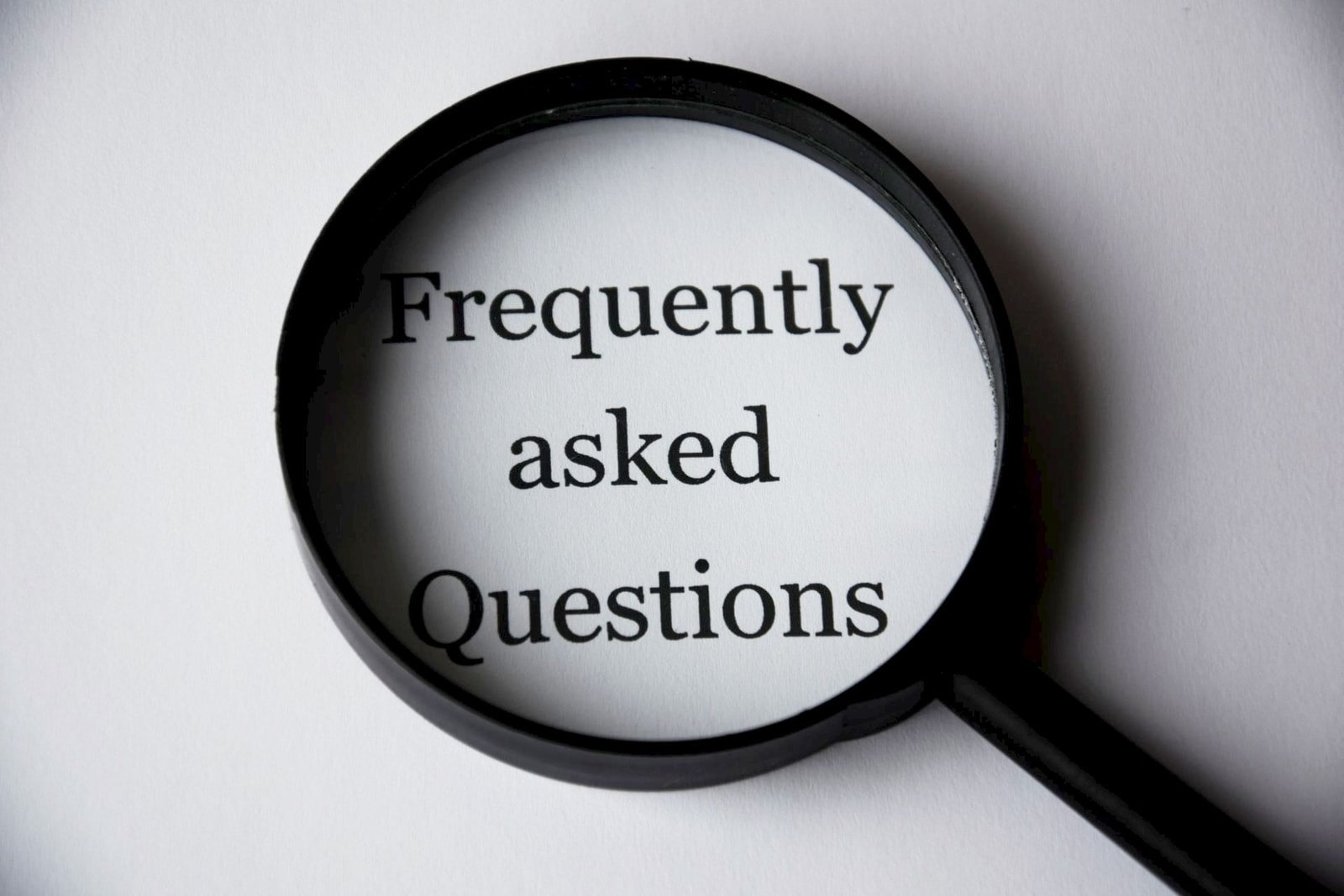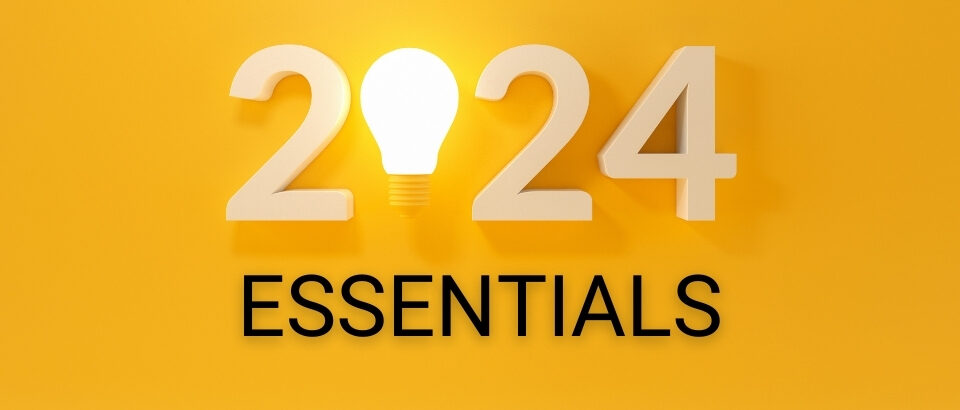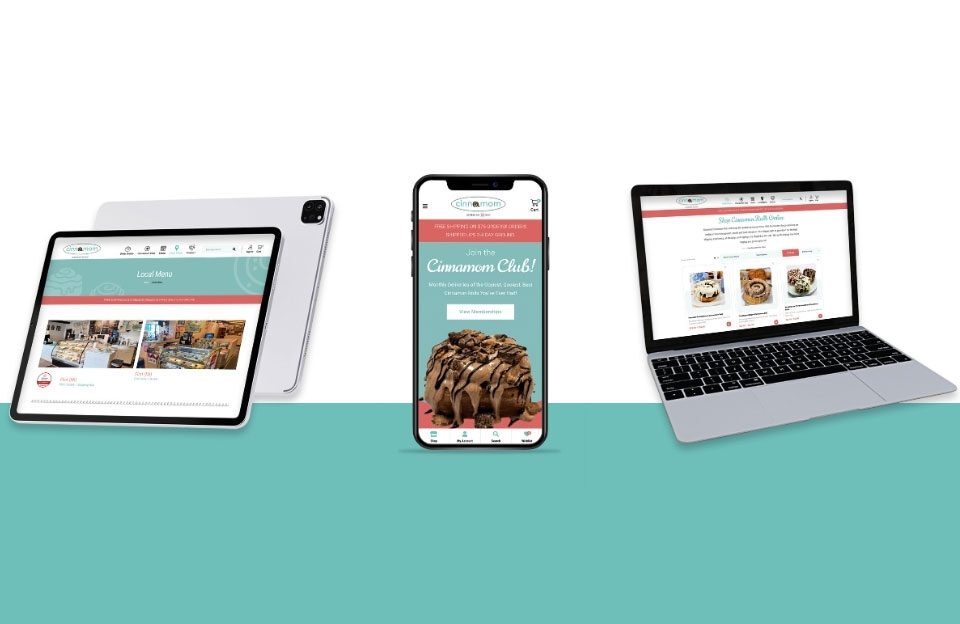


10 Signs You Need A New Website
June 8, 2020


20 Questions to Ask a Website Company Before Starting Work
June 30, 2020Are you a fan of creating websites but want some fresh suggestions? We have come up with 40 design ideas that you can implement in your new site. Each of these ideas come with the desire to help you make the best website possible. Enjoy!
1 – Use Real Photography
If possible, it is always better to use photos of real people and real products rather than trying to fit images to your site. However, if you do decide to go with real photography, you need to make sure it is high quality and taken for the work. There is never a time when it is a good idea to use your holiday snaps for your homepage! Bonus: Find a web design and digital marketing agency that offers photography services.


2 – Use Stock Imagery From Pexels.com
If you are unable to use real photography for your site, then try using Pexels.com. It is a free, stock image gallery that has been curated by creative photographers who want to get their work seen. If you do use an image, remember to reference your source!


3 – Find Icon Graphics At Flaticon.com
Set your site apart from the competition by using icon graphics. You can find a wide range on flaticon.com, and there are thousands that are free for you to use. Remember, if you sign up for a free account you will need to reference your source on your site.
4 – Get Website Template Ideas From Themeforest
Coming up with a brand new theme for a website can be tough and time-consuming. To save the stress, head over to Themeforest to find design ideas that you can simply download and customize to suit your site.


5 – Research Theme Page Design Ideas Online
When it comes to finding the best design for your webpage, you should first take some time to check out sites that are already active. You will find lots of inspiration and ideas that you can use to start planning your new site.


6 – Use A Frequently Asked Question Page
Website audiences will have questions, and it is impossible to answer them all in one webpage. Rather than not answering any, consider adding a FAQ page to your site to deal with any queries. You can update this over time to add in any questions that you find keep cropping up.


7 – Add A Blog
One of the best ways to keep your web design current is to add a blog that keeps people returning to your site. You can use your blog to promote your page, your business and use it to open a dialogue with the traffic that you drive to your site.


8 – Minimalism Is On Trend
Do not feel pressure to fill your site with tons of different fonts, photos and content. Instead, sell a key message clearly and allow that to take pride of place. Minimalist design is hugely popular as it allows your audience to find their way around your site without being bombarded with things.


9 – Be Consistent With Your Branding
When it comes to branding, make sure each page is consistent. Choose a color theme, and logo and mirror them on every page, so that become a subconscious message rather than an overt one. If you master this, then your audience will know who you are every time they see your brand.
10 – Put Your Logo In The Top Left Corner On Every Page
It is important to have your logo on every page, and the general rule of website design is to locate it in the top left corner of every page. This helps provide consistency and reaffirms who the brand is every time a person navigates to another page.
11 – Install A Search Feature
Many people will come to your site to find a single piece of information, and so it makes sense to install a search bar for them to use. Place this in the top-right header so that it is easy to access, but so it does not take up too much room.
12 – Use Your Social Media Icons On The Bottom Of Each Page
Linking your website to social media will pay off, and so when you are designing your page, you should install the icons to each account at the bottom of every page. This will make it easy for your audience to find you.
13 – Use Call To Action Buttons
Installing call to action buttons may be an obvious design tip, but it is an essential one. It is well known that a reader is more likely to click a button if it instructs them to do it. Make sure each page has a call to action button in a logical location.
14 – Have A Mobile Presence
Too many people forget to ensure that their web design is compatible with mobile devices. When you are designing your page, you must take into account all the different ways people access the internet and ensure that you have optimized your site for each option.
15 – Chunk Your Content
When you upload your content to your draft site, it is wise to chunk it so that your audience is not overwhelmed. Try to disperse lots of writing by adding images and don’t be afraid to add an ellipsis link to take a reader to a dedicated page for a longer article. That way, they can decide if they want to read it all or not.
16 – Consider A One Page Design
One page websites are growing in popularity, and you may want to consider this design feature for your new site. You will need to condense your site into a few key messages in order to develop interest and get people to engage with you.
17 – Check Out Winning Designs On Awwwards.com
If you want your design to be as special as possible, then it may be a good idea to check out what websites are at the top of their game. Awwwards.com features web designs that have won awards for their work so you may get some great ideas when using this.
18 – Look At Finished Projects On WebDesign-Inspiration.com
If you want to see how regular sites have dealt with any issues that have cropped up for you, then head over to WebDesign-Inspiration.com and have a look at some of the newest designs out there. You can interact with each site, and they are updated daily with new ideas for you to look at.
19 – Use Color Changing And Interactive Buttons
Adding an interactive button offers people confidence that they have clicked the right thing, so color changing, interactive buttons are a great addition to have when designing your website.
20 – Look In The Real World For Inspiration
Do not fall into the trap of only looking at other websites for ideas and inspiration. Take time to get out into the real world and search for inspiration. Adding these layers of reality to your designs will help you provide a fresh look when you publish your site.
21 – Spend Time On Typography
There are so many fonts to choose from today that typography means everything. It is well worth taking the time to discover all the possible fonts you can use and then work out which one really speaks to what you have designed.
22 – Research Your Competition
If you have a site that will be in direct competition with other sites, then it makes perfect sense to do your research before you start or finalize your design. Look at how their sites are constructed and what content they use before you begin to plan how you want yours to compete with theirs.
23 – Collect Your Content Before You Finish Designing
Many people make the mistake of adding content as the last piece of their design. However, the content is the bit that people will interact with, so it makes sense to design your site around it. Collate the content that you want to use before you create your site so that it can be used when you are putting each element together.
24 – Make Your Site Intuitive
These days people expect so much more from technology than ever before, and as most mobile phones are designed around the notion of intuitive thinking, then it makes sense that web design should follow suit. Intuitive websites are more popular with audiences and are far easier to navigate – it is a must.
25 – Understand User Experience
When it comes to creating a meaningful user experience, it is important that you understand what User Experience means and how to provide it for the audience you are targeting. Each element of your site needs to be evaluated from a user’s perspective to really ensure you are appealing to people properly.
26 – Understand User Interface
As well as User Experience, you must ensure that your site is optimized for users and this is where User Interface comes in. Ensuring that all elements of your site are easy to access and use makes it more appealing to your potential audience.
27 – Get Feedback
One of the best ways to check your design is to get feedback from potential users before you publish the site. Sharing information with focus groups will really help you to iron out any potential issues before they arise.
28 – Consider Using Webflow
If you are building a site but are not great with coding, then try Webflow. This tool allows you to build without the need to understand complex coding and the results are stunning sites that please all audiences.
29 – Avoid Too Much Scrolling On Your Homepage
While it is tempting to fill up your homepage with information, steer clear of using too much scrolling on this essential page. Instead, give your audience a taste of what you are about and help them navigate to the relevant pages instead. Your homepage is a summary of your business to get people into the bulk content of the site.
30 – Get SEO Confident
Whether you like it or not, SEO is essential if you want your site to rank highly on search engines. Spending time getting to grips with SEO will help you to create content that appeals and ranks highly. Finding a SEO company can help you avoid these headaches and get you on the right path immediately.
31 – Create Unique Content
When designing your site, you should aim for everything to be unique to you, and this applies to your content. No one wants to read things that have been regurgitated from other sites, so your job is to create unique and compelling content that really speaks to your audience.
32 – Talk To Your Audience & Make It About Them
Rather than speaking in the past tense or making everything about you, talk to your audience instead. Acknowledging them and showing them that you respect them will induce them to continue exploring what you have to offer.
33 – Do Not Be Afraid Of Negative Spaces
If your site has blank spaces, then do not be too quick to fill them up! Blank spaces help people to see the natural separation between sections and add emphasis to the information that is on other sections of the page.
34 – Prioritize Site Speed
You may have the best site designed and be ready to upload it, but you also need to consider the technical elements that drive people to your site. The speed of your site is one of these elements, and it is important to produce the most responsive site you can so that people are not left bored when waiting for a new page to refresh.
35 – Use Multimedia To Excite
As well as images and content, you should also consider adding videos and other multimedia elements to your site. However, this should not be overdone and only ever used when you want to draw some real attention to an important part of the page.
36 – Reduce The Options
Rather than offering your audience a myriad of options to choose from, reduce them to just a few. This takes the stress of what to choose away from the reader and allows you to emphasis the most important elements.
37 – Use Visual Cues To Direct Your Audience
If you are using images of people on your site, position them to the looking at the content you want people to engage with. This visual cue will entice them to engage with your content.
38 – Use A Visual Hierarchy
A visual hierarchy is when you show the prominence of items through size, color and order. When it comes to your site, you should use this hierarchy to draw people’s attention to the most important information.
39 – Do Not Try To Overhaul Everything
As much as you may want your site to be cutting edge and unique, you should avoid trying to reinvent the wheel completely. Humans are creatures of habit and will want to feel that they know how to use your site when they arrive.
40 – Simplify Your Navigation
A website that is easy to navigate is typically more popular with an audience as they do not need to think too hard about how to get to where they want to be. Reduce your pages and label them clearly so that it is clear to a user what they can expect to find when they click on it.
Put some or all of these ideas into your next website project! These are just a foundation to website creation and at Janszen Media we like to say, “If you can imagine it, we can create it!” We love a challenge and taking on creative ideas is what makes this job so much fun. Schedule a call with us today and let’s get creative!
—
Janszen Media designs and develops beautifully responsive websites, optimized for SEO and user experience. If you need a new website contact us at info@janszenmedia.com for a free quote.
For more website and digital marketing tips, follow Janszen Media on Facebook, Twitter, and Instagram.





